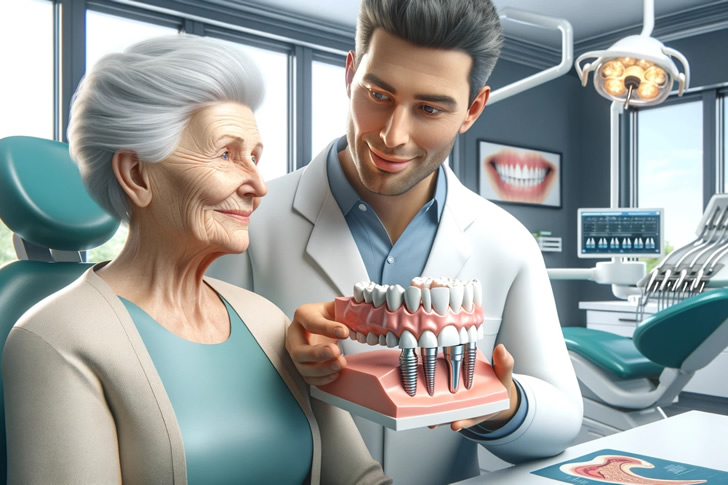Budget-friendly Dental Implants Available Today for Seniors
Dental health is a crucial aspect of overall well-being, particularly for seniors. As we age, natural tooth loss can become more common due to various factors like decay, injury, or gum disease. Dental implants have become a popular solution, offering a durable and aesthetically pleasing option. However, cost can be a prohibitive factor for many, especially for retirees on fixed incomes. This article explores the affordable dental implant options available today, helping seniors regain not just the functionality of their teeth but also their confidence.

The Basics of Dental Implants
Dental implants are medical devices surgically inserted into the jawbone, where they serve as the roots of missing teeth. Above the implant, a crown is placed to simulate an actual tooth. Implants are favored over other dental prosthetics like dentures or bridges due to their stability and longer lifespan. According to the American Academy of Implant Dentistry, over 3 million people have implants, a number growing by 500,000 annually. Though traditionally expensive, recent advancements and market forces have made them more accessible.
Factors Affecting the Cost of Dental Implants
The cost of dental implants can vary significantly, influenced by factors such as the type of implant, the material used, the dentist’s experience, and geographical location. On average, the price for a single dental implant can range between $1,000 and $3,000, with additional costs for the abutment and crown bringing the total to approximately $3,000 to $4,500 per tooth. However, this is changing due to technological advancements and increased competition.
Financial Assistance and Insurance Coverage for Seniors
Understanding insurance coverage and finding financial assistance can substantially reduce the burden of dental implant costs. While Medicare traditionally does not cover dental implants, many private health insurance plans and Medicare Advantage plans might offer partial coverage. Additionally, organizations like the Dental Lifeline Network offer support to eligible seniors, and many dental schools provide services at a reduced cost as a part of their training programs. It’s worth investigating local options for reduced-cost dental care and seeking out dental insurance plans that offer some level of prosthetic coverage, even if limited.
Technological Advancements Reducing Costs
Technological improvements in dentistry over the past decade have also contributed to making dental implants more affordable. Improved techniques in 3D printing and imaging have not only reduced the cost but also increased the success rate of dental implants. The development and approval of new, less expensive materials for implants and abutments continue to drive costs down. This accessibility allows more seniors to consider this less invasive and more durable option.
Alternative Treatment Options
For those who find the cost of traditional dental implants prohibitive, there are alternatives. Mini dental implants, for example, are smaller and require less bone structure. They are also less invasive, require less recovery time, and typically cost 60-70% of the price of standard implants. Additionally, some patients may opt for dental bridges or removable dentures as more economical solutions, though they come with different maintenance requirements and typically don’t offer the same longevity or comfort as implants.
Preparing for Dental Implant Treatment
When considering dental implants, planning is key. Consulting with multiple dental specialists to get a comprehensive view of your dental health and the available options is crucial. Seniors should get a thorough dental examination, including X-rays and sometimes a CT scan, to ensure the jawbone is adequate to support implants and to map out the implantation procedure. These preparative steps can help avoid costly complications and re-dos.
The Long-term Value of Dental Implants for Seniors
Despite the initial costs, dental implants offer great long-term value. They can significantly improve quality of life by enhancing appearance, comfort, and the ability to eat a wider variety of foods. Implants can also protect facial bone, preventing deterioration that occurs with missing teeth. Furthermore, with proper care, dental implants can last a lifetime, unlike dentures or bridges, which may need to be replaced every 5 to 10 years. This aspect makes them a worthwhile investment for many seniors looking for a permanent solution to tooth loss.
Conclusion
The evolution of dental implant technology and the increasing number of financing options have made these procedures more accessible for seniors. By understanding the costs involved, exploring insurance and financial aid options, and staying informed about technological advances, seniors can find affordable solutions that allow them to enjoy the benefits of dental implants and improve their overall quality of life.







Recent Comments